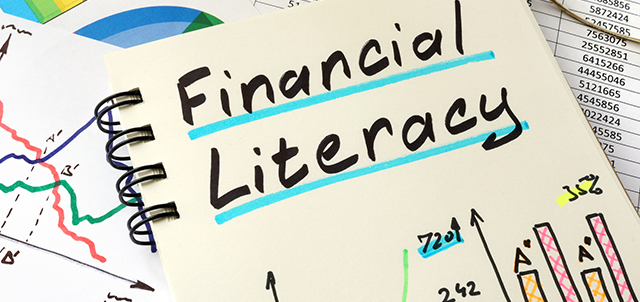Starting Small—What Is Micro Investing?

Investing is not reserved for those with lots of extra cash or connections to a financial professional. Anyone can invest, and you don't need much to get started. In fact, pennies will do just fine.
How, you ask? An increasingly popular way is through a growing trend, helped by the latest in app technology, called micro investing.
As the name implies, micro investing allows you to invest money in small amounts, often automatically. Most micro investing occurs through mobile-based platforms. You can make investments—you really do invest money, and more on that just ahead—or check your account on the go with your cellphone or tablet. The idea is that small investments made at frequent intervals can add up without much effort or pocketbook pain. We are a "right here, right now" culture, and if we can order a new pair of shoes while walking down the street, why should investing be any harder?
How Does It Work?
Depending on the type of app you use, micro investing can mean different things. One way to micro invest is to use an app that rounds up the dollar amounts on purchases you make on a credit or debit card and diverts the extra cash to an investment account. (There are also micro savings apps that divert extra change to a savings account. These accounts are generally FDIC insured and, unlike investment accounts, are not subject to market risk.)
Using an app on your phone, you enter some personal information, including your credit or debit card number or multiple account numbers, since you are often able to link numerous cards to your account. You must also answer some additional questions designed to determine the type of investments that fit your investment goals and mesh with your risk tolerance. Some micro investing apps use algorithms to create a risk profile based on your responses to various questions, then make recommendations on how and where you should invest your money.
Then you become an investor. When you spend $7.50 for a sandwich at lunch, the app rounds up your purchase to the nearest dollar ($8) and automatically transfers $0.50 to an investment account. Once your round-ups are large enough (say $5), you can use that money to purchase stocks or other investments, or the app might make purchases for you automatically based on your investment profile.
Some apps present investment options thematically, so you can choose investments that align with your social or environmental views. You also might have the option to set up a recurring daily, weekly or monthly allocation into an investment account, or contribute to a retirement account, such as an IRA, with the help of an investment professional.
Before You Sign Up
Here are six things to consider before going micro.
- All apps are not created equal. Investing apps come in a few different forms, and costs vary. Read the disclosure materials—that's where you will find fee information and other important information, such as the types of products and services offered and how you can invest your money. While some of these apps don't charge fees and some have very low cost structures, there are always tradeoffs. For instance, mutual funds and ETFs have built-in cost structures that you pay for indirectly in the form of an "annual expense ratio." Also, it may be difficult or impossible to get in touch by phone with a service representative if you have questions or concerns about your account. In short, know what you are signing up for.
- Check to see if the firm is registered. In order to invest your money (even tiny amounts), a firm must be registered with FINRA or the Securities and Exchange Commission. Research the company or any investment firm or professional you are considering with FINRA's BrokerCheck tool.
- Pay attention to fees. Investing app fee structures vary greatly depending on what app you use. Some micro investing apps charge a low monthly fee for their basic service, like $1, or don't charge a monthly fee at all. Others charge fees per trade or offer free trades until your account reaches a certain dollar amount. What you pay will depend on what type of services you choose. Some apps charge up to .5 percent or more or your account balance for premium services, such as access to a financial professional. Consider how these fees will affect your investment returns, especially given that micro investments don't typically result in significant returns. A dollar a month might not seem like much until you put that number in context. A monthly $1 fee works out to 12 percent in fees per year if you only have $100 in your account.
- Watch out for unintended charges. Consider how automatic debits from a checking account or credit card might result in additional fees. To contribute to an investing app, you have to provide the platform with access to other financial accounts. If an investing app tries to debit your bank or credit card account when your account doesn't have the balance available to meet the request, you could face overdraft fees or other charges. Some apps require that the customer turn off overdraft protection for other accounts to avoid these fees. Virtually all say they are not responsible for overdraft fees.
- Contribute to retirement and emergency funds. App investing is convenient, but it shouldn't be the only way you invest your money. Make sure you are doing the most with other investment and savings accounts. This includes taking advantage of your employer-sponsored retirement account, if you have one, and contributing enough to take advantage of a company match, if one is offered. It's also important to establish an emergency fund and pay down high interest debt, such as credit card debt. It may be possible to use an investing app to save for emergencies, but remember that fees may be higher than in another type of account, such as a savings account, and investments fluctuate, so you can lose money.
- Don't spend money to make money. Just because a small portion of your spending is going into an investment account, it isn't an excuse to make unnecessary purchases to drive up your deposits. Instead, think about setting some financial goals and come up with a plan to set aside a specified amount of money each paycheck.
Is Micro Investing Right for You?
Setting aside small amounts of money on a regular basis might be a good way to start investing and put money away that you probably won't miss. But consider how app investing fits with your own personal financial objectives—and your overall long-term investment strategy.





